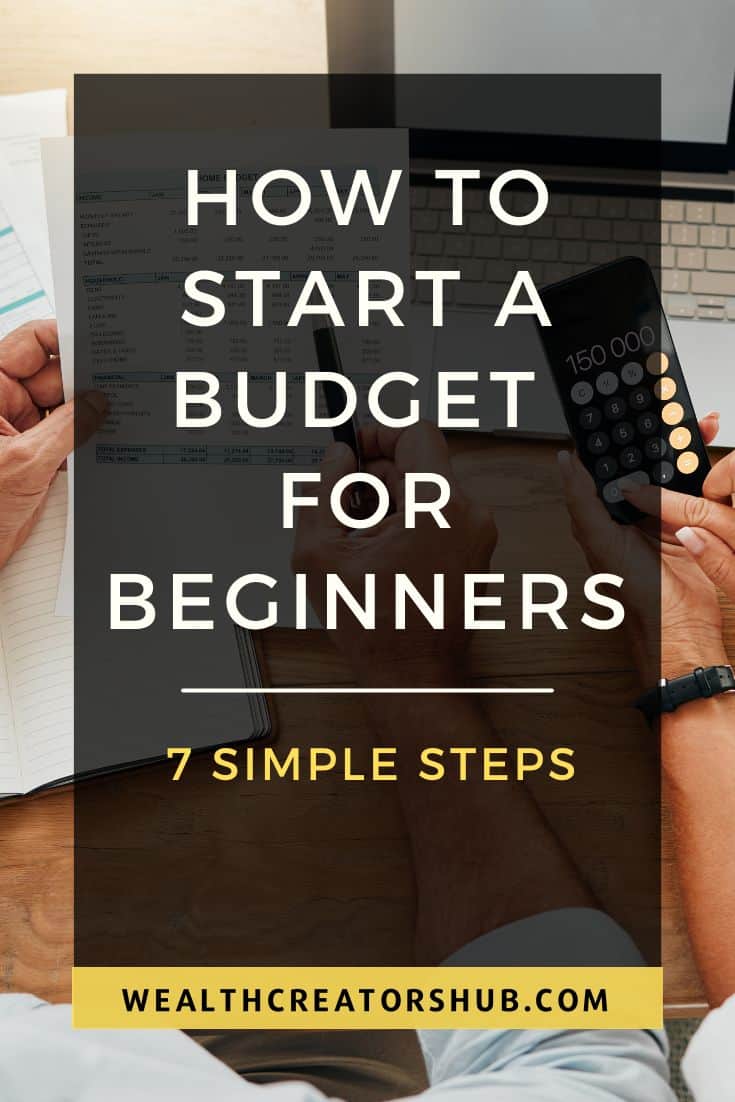Taking control of your finances can be a challenging task, but a simple change in your spending habits might be just what you need. The No-Spend Challenge is an intriguing way to develop new financial habits by focusing only on essential spending. It encourages you to carefully manage your money for a set period, like a month, and helps you see where your financial priorities truly lie.
By avoiding unnecessary purchases, a No-Spend Challenge can help you save money and rethink your spending habits. This popular trend involves cutting back on non-essential expenses, like dining out and entertainment, and can be customized to suit your lifestyle and goals. Participants have found it to be a refreshing reset for their financial planning, often leading to a more mindful approach to budgeting.
Embarking on a No-Spend Challenge is not just about cutting costs; it’s a chance to build a solid foundation for long-term financial health. It’s an opportunity to learn about budgeting, identify areas for potential savings, and reflect on what is genuinely important for your well-being.
Key Takeaways
- Focus on essential spending and avoid non-essential purchases.
- Learn to budget effectively and manage necessary expenses.
- Reflect on spending habits for improved long-term financial health.
Don’t forget to grab our FREE 30- Day No-Spend Challenge Workbook, at the end of this article.
Understanding the No-Spend Challenge

Engaging in a No-Spend Challenge helps you reduce discretionary spending and focus on necessary expenses. This process encourages mindfulness about your financial habits and can boost your savings.
The Basic Principles
The No-Spend Challenge is about spending money only on necessary expenses like rent, utilities, and groceries. Everything else, such as dining out or buying new clothes, is paused for the challenge duration.
Participants often set their timeframe, whether that’s a week, a month, or longer. In setting your rules, consider what counts as essential and non-essential. This will be unique to your needs. By cutting back on non-essential expenses, you can save more, prioritize essential spending, and gain a clearer view of your financial habits.
Potential Benefits
A significant benefit of the challenge is increased savings. By eliminating discretionary spending, you can allocate more funds towards savings accounts or debt reduction. It also offers greater awareness of your spending habits.
Being conscious of where your money goes can lead to better budgeting practices. Additionally, the challenge might encourage more creativity in finding free or low-cost activities to enjoy.
Improved financial discipline is another advantage. Consistently practicing restraint can cultivate long-term habits that support a healthier financial lifestyle.
Common Misconceptions
Many people think the No-Spend Challenge means cutting out all spending, but it focuses on discretionary spending. Essential expenses, like bills and groceries, are still allowed. Some assume it requires drastic lifestyle changes.
However, the challenge can be adapted to fit individual circumstances, such as adjusting the timeframe or what counts as non-essential. Another misconception is that it leads to boredom or deprivation.
Engaging in free activities with family and friends or exploring hobbies at home can offer fulfilling alternatives without spending money. Adapting the challenge to fit your lifestyle can prevent feeling deprived, making it a sustainable and positive financial exercise.
Preparing for a No-Spend Challenge

Embarking on a no-spend challenge is a strategic way to reevaluate your budgeting practices. It helps in setting clear financial goals and understanding your spending habits. This preparation is crucial to ensure success and make the most out of your efforts.
Setting Realistic Goals
Start by defining specific and achievable financial goals. Decide how much you hope to save during the challenge. These goals will guide you and help keep your motivation high. Think about both short-term and long-term objectives. For example, you might want to pay off a credit card or save for a vacation.
Consider past spending habits to set practical targets. If unexpected expenses arise, adjusting your goals is okay. Tracking your progress can help ensure you have a clear picture of your financial situation. This can be done with apps or by maintaining a journal.
Creating a Supportive Environment
Communicate your no-spend challenge to family and friends. They can offer encouragement and help you stick to your financial goals. Consider involving them in the challenge to create a shared experience. This can make it more enjoyable and easier to stay committed.
Set up your home environment to support your goals. Remove temptations by unsubscribing from promotional emails and online shopping apps. Find alternative activities, like free community events, to replace outings that involve spending money. Having a supportive environment can significantly impact your success.
Identifying Non-Essential Expenses
List all your monthly expenses. Divide them into essentials, like groceries and rent, and non-essentials, such as dining out or subscriptions. Identifying what you can cut back on is crucial for effective budgeting.
Many people are surprised by the number of unnecessary expenses they have. Consider using tools like spending apps to help track these costs. This practice provides insight into your spending habits and highlights areas where you can save. By focusing on essential needs, you can reach your financial targets and improve financial health over time.
Budgeting Techniques

Managing your spending during a no-spend challenge requires focus and discipline. Tracking expenses, smartly allocating funds, and making necessary adjustments are key strategies. Let’s explore these techniques to ensure success.
Tracking Your Spending
Understanding where your money goes is crucial. Track every expense daily to catch any unplanned spending. A simple spreadsheet or budgeting app works well. Record your essentials, like rent and utilities, separately from non-essential items. This approach helps you stay committed.
Regularly review your expenses to find patterns. If you notice an increase in spending on groceries, check if you’re buying unnecessary items. Make use of alerts or notifications on your phone to stay informed about your account activity. This will help you save in your savings account by being proactive.
Allocating Funds Wisely
Set clear categories for your budget before you start. Determine what expenses are truly necessary, like food, rent, and transport. Use a list to differentiate between essential and non-essential items. Allocate funds accordingly, ensuring that your debt repayments, if any, are prioritized.
Consider using the envelope method, where you place cash for each budget category into labeled envelopes. This method can prevent impulsive purchases. Remember to reserve a small emergency fund for unexpected but genuine needs. Your personal finance gains can be significant when allocation is handled smartly.
Adjusting Your Budget Mid-Challenge
Being flexible with your budget is important. If an unexpected expense arises, like a medical bill, revisit your budget and make adjustments. Cut back on non-essential categories to cover these costs without increasing debt.
Monitor your progress regularly and don’t be afraid to make changes. Avoid revising your rules frequently, but a slight modification should be fine if it aligns with your goals. Mid-challenge adjustments can help maintain your focus and prevent burnout. The key is to keep your overall financial targets, including maintaining a healthy savings account balance, in sight.
Managing Necessary Expenses

Focusing on necessary expenses is crucial during a no-spend challenge. By carefully monitoring your spending on housing, utilities, groceries, and other essentials, you can make significant progress in achieving your financial goals.
Housing and Utilities
Housing costs, usually the largest monthly expense, must be managed wisely. Review your lease or mortgage for any potential areas of savings. For renters, negotiating with your landlord for lower rent or a more favorable lease agreement can be helpful.
Utilities like electricity, water, and gas are necessary but can be minimized. Opt for energy-efficient appliances and practice habits like turning off lights and unplugging devices. Consider installing a programmable thermostat to automatically manage your heating and cooling needs.
Monitor your internet and phone services as well. Check if there are cheaper plans available that suit your usage. Many providers run promotions or bundle offers that could save you money without compromising on your needs. Comparing and adjusting these services can help you reduce essential costs significantly.
Groceries and Essentials
Groceries and essentials often take up a considerable part of your budget. Create a meal plan to streamline your grocery shopping. This practice helps avoid impulse buying and ensures that you purchase only what you need. Preparing meals at home is typically cheaper and healthier than dining out.
When shopping, look for discounts, coupons, and bulk deals to save money. Choose generic brands over name brands for lower prices without sacrificing quality.
Essential items like toiletries and cleaning supplies can often be bought in bulk. Consider store-brand items, which are often much cheaper and offer similar quality. Monitoring these expenses and making smart choices allows you to maintain your needs without overspending.
Strategies to Reduce Discretionary Spending
To effectively cut down on discretionary spending, you can focus on avoiding temptation, finding creative alternatives to dining out, and keeping impulse purchases under control. These strategies can help you reach your financial goals without feeling deprived.
Avoiding Temptation
Eliminating temptation is a key step in controlling your spending. Unsubscribe from marketing emails that try to entice you with sales and discounts. This removes the urge to make impulsive purchases you might later regret.
Setting up a strict budget is also vital. Clearly define what you can spend on non-essential items and stick to it. Use cash instead of cards for discretionary spending, as this can help you notice the physical act of money leaving your hand more acutely.
Staying busy with productive activities can further reduce urges to spend. Engage in hobbies or exercise to shift your focus away from shopping.
Creative Alternatives to Eating Out
Dining out can be a significant expense. Opt for home-cooked meals to save money and perhaps eat healthier. Planning meals in advance allows you to buy only what you need, reducing food waste and unnecessary spending.
If you enjoy the social aspect of eating out, consider hosting a potluck dinner with friends. This way, everyone contributes a dish, making it a low-cost yet enjoyable event.
When you’re craving takeout, try cooking restaurant-style meals at home. There are plenty of recipes online tailored to replicate your favorite restaurant dishes, providing a satisfying alternative without the hefty price tag.
Controlling Impulse Purchases
Gain control over impulse buys by implementing a waiting period. Before purchasing a non-essential item, give yourself 24-48 hours to think it over. This delay helps in assessing whether the item is truly needed.
Utilize shopping lists when you go out, especially for groceries. Stick to the list to avoid buying extras. Apps and tools can help you keep track and enforce limits.
Also, evaluate your spending triggers. If certain environments or emotions lead you to shop impulsively, find ways to avoid or manage these situations. You could engage in a distracting activity or talk to a friend instead.
Reflection and Adjustment
Reflecting on your no-spend challenge is crucial for understanding your spending habits and achieving financial progress. By examining past spending, acknowledging challenges, and adapting your strategies, you can gain better control over your finances.
Reviewing Spending Patterns
Start by analyzing where your money usually goes. Look at your bank statements and categorize your expenses. Identify areas where you tend to overspend. This could be dining out or online shopping. Understanding these patterns can help you pinpoint where to make changes.
Keep an eye on essential versus non-essential spending. Recognize which costs are necessary and which are not. This step is about gaining insight into your behavior and recognizing opportunities to save more.
Learning from Challenges
During the no-spend challenge, you likely faced some hurdles. Whether it was resisting a sale or dealing with unforeseen expenses, these experiences offer valuable lessons. Reflect on what was hard for you. Consider moments when you were tempted to break the rules.
Acknowledging these challenges can prepare you for future spending decisions. Each obstacle provides a learning opportunity. It teaches you more about your triggers and how to manage them effectively.
Adapting Strategies for Future Success
With the insights gained, develop strategies that will help in sticking to a healthier financial routine. Consider using tools like budgeting apps to track your expenses more easily. Create a new plan that incorporates lessons you’ve learned, such as setting stricter limits on entertainment or impulse buys.
Adjust your budget to better align with your financial goals. Make changes that reflect both necessary expenses and savings objectives. By doing so, you’re setting yourself up for continued success and greater financial stability in the long run.
Being flexible with your strategies ensures that you can adapt to different financial situations in the future.
Leveraging the No-Spend Challenge for Long-Term Gain
Taking on a no-spend challenge can do more than just save money in the short term. It can also help you build a robust savings plan and develop financial discipline, supporting long-term financial goals. This practice focuses on enhancing savings and improving financial habits.
Building a Robust Savings Plan
Participating in the no-spend challenge encourages you to prioritize essential expenses. This approach allows you to direct more funds into your savings account. Consistently setting aside money for savings helps you reach financial goals like an emergency fund or a vacation trip.
During the challenge, track where your money goes and identify non-essential expenses you can cut. This habit raises awareness about spending patterns and aids in making better financial choices in the future. Try using a simple budget tool to monitor these adjustments and reinvest any saved amounts.
Commitment to a no-spend period isn’t just for today; it prepares you for unexpected expenses by building financial resilience. You take charge of your savings goals by saving proactively.
Developing Financial Discipline
Sticking to the no-spend challenge sharpens your financial discipline. By consciously choosing not to make unnecessary purchases, you learn to resist impulse buys which contribute to more thoughtful financial decisions.
With practice, this challenge helps you prioritize long-term financial goals over short-term gratification. Your ability to delay satisfaction proves valuable in managing your finances effectively. Discipline gained here has lasting effects, improving how you approach financial responsibilities.
Your journey toward financial well-being strengthens as you focus on value over convenience. Each disciplined choice supports your path to financial freedom and security. Embracing these small changes fosters a mindset that benefits your finances for years to come.
Life After the No-Spend Challenge
Completing a no-spend challenge can be empowering and eye-opening. It often leads to improved financial discipline and long-term changes in spending habits. You might find that your approach to managing personal finance is more balanced and sustainable.
Maintaining Financial Stability
It’s crucial to keep the momentum going after your no-spend challenge. To maintain financial stability, start by setting a realistic budget.
Your budget should include savings as a regular line item, which helps in building an emergency fund. Tracking your expenses remains essential too. Utilize apps or spreadsheets to keep tabs on where your money goes each month. This practice ensures you are meeting your new savings goals and not slipping back into old habits.
Additionally, consider reviewing your debt situation. Focus on paying down debt with high-interest rates first to save on extra costs. Developing a steady routine of reviewing your finances will help in keeping the progress you made during the challenge.
Implementing Permanent Lifestyle Changes
The lifestyle changes you try during a no-spend challenge can leave a lasting impact. Consider continuing some of these, such as finding free activities for entertainment or cooking at home more often.
Creating a list of cost-free hobbies or activities can be beneficial. These interests not only save money but also enrich your life. Moreover, avoid using credit cards for non-essential purchases. Getting into a habit of using cash or debit can curb impulsive buying tendencies.
Incorporating sustainable habits can lead to long-term financial health. These small adjustments can make a big difference in your monthly budget and help in building a more secure financial future.
Evaluating the Overall Impact
It’s important to assess the effect of your challenge on your personal finance and well-being. Did you manage to save a specific amount? Maybe you noticed a decrease in unnecessary spending.
Create a simple list of the positive changes, such as reduced debt or increased savings. Look at your financial progress before and after the challenge. You might notice a shift in perspective regarding needs versus wants.
Reflect on how these changes have impacted your life and decision-making. Understanding the benefits can motivate you to stick with the improvements made and can guide future financial decisions.
Frequently Asked Questions
A No-Spend Challenge encourages you to focus on essential purchases only. It helps you manage your spending habits, track expenses, and improve your financial health. The questions below offer insights into how to begin and succeed in this effort.
How do I get started with a No-Spend Challenge?
To start, define what “essential” means to you. List items that are necessary, such as groceries or bills. Use this list to guide your spending choices. Consider setting a time frame, like a week or a month, to keep the challenge manageable.
What are some common rules or guidelines for participating in a No-Spend Challenge?
Common guidelines include avoiding unnecessary expenses like dining out, entertainment, or shopping for clothes. You can also set specific goals, such as saving a certain amount of money by the end of the challenge. It’s essential to be honest about what you truly need versus want.
Can you suggest strategies for succeeding in a No-Spend Challenge?
Success often depends on planning. Meal planning can help curb food spending, and setting strict grocery lists can keep you on track. Identify your spending triggers and find ways to avoid them. Regularly review your progress to stay motivated and adjust your strategy as needed.
Are there any recommended tools or apps to track spending during a No-Spend Challenge?
There are several apps like Mint or You Need A Budget (YNAB) that can help you track your spending. These tools allow you to set budgets, monitor expenses, and view your financial progress in real-time. They can be valuable in making sure you stick to the challenge rules.
How can a No-Spend Challenge impact my overall financial wellbeing?
Participating in a No-Spend Challenge can help you improve your financial wellbeing by increasing savings and reducing unnecessary spending. It can also build awareness of spending habits and encourage more mindful financial decisions. Over time, this can lead to more financial stability and peace of mind.
What should I do if I encounter unexpected expenses during a No-Spend Challenge?
If you face unexpected expenses, assess if they’re necessary. If they are, cover them if possible but adjust your plans to avoid jeopardizing your essential budget. Consider setting aside a small emergency fund before starting the challenge to handle such situations without derailing your progress.
So, are you up for the challenge? Let us know in the comments if you’re taking on the No-Spend Challenge, and share your best money-saving tips!
Frequently Asked Questions
A No-Spend Challenge encourages you to focus on essential purchases only. It helps you manage your spending habits, track expenses, and improve your financial health. The questions below offer insights into how to begin and succeed in this effort.
How do I get started with a No-Spend Challenge?
To start, define what “essential” means to you. List items that are necessary, such as groceries or bills. Use this list to guide your spending choices. Consider setting a time frame, like a week or a month, to keep the challenge manageable.
What are some common rules or guidelines for participating in a No-Spend Challenge?
Common guidelines include avoiding unnecessary expenses like dining out, entertainment, or shopping for clothes. You can also set specific goals, such as saving a certain amount of money by the end of the challenge. It’s essential to be honest about what you truly need versus want.
Can you suggest strategies for succeeding in a No-Spend Challenge?
Success often depends on planning. Meal planning can help curb food spending, and setting strict grocery lists can keep you on track. Identify your spending triggers and find ways to avoid them. Regularly review your progress to stay motivated and adjust your strategy as needed.
Are there any recommended tools or apps to track spending during a No-Spend Challenge?
There are several apps like Mint or You Need A Budget (YNAB) that can help you track your spending. These tools allow you to set budgets, monitor expenses, and view your financial progress in real-time. They can be valuable in making sure you stick to the challenge rules.
How can a No-Spend Challenge impact my overall financial wellbeing?
Participating in a No-Spend Challenge can help you improve your financial wellbeing by increasing savings and reducing unnecessary spending. It can also build awareness of spending habits and encourage more mindful financial decisions. Over time, this can lead to more financial stability and peace of mind.
What should I do if I encounter unexpected expenses during a No-Spend Challenge?
If you face unexpected expenses, assess if they’re necessary. If they are, cover them if possible but adjust your plans to avoid jeopardizing your essential budget. Consider setting aside a small emergency fund before starting the challenge to handle such situations without derailing your progress.
Before you go….
Grab Your FREE 30- Day No-Spend Challenge Workbook
- March 15, 2025
- Rali
- 11:22 pm
Taking control of your finances can be a challenging task, but a simple change in your spending habits might be just what you need. The No-Spend Challenge is an intriguing way to develop new financial habits by focusing only on essential spending. It encourages you to carefully manage your money for a set period, like a month, and helps you see where your financial priorities truly lie.

By avoiding unnecessary purchases, a No-Spend Challenge can help you save money and rethink your spending habits. This popular trend involves cutting back on non-essential expenses, like dining out and entertainment, and can be customized to suit your lifestyle and goals. Participants have found it to be a refreshing reset for their financial planning, often leading to a more mindful approach to budgeting.
Embarking on a No-Spend Challenge is not just about cutting costs; it’s a chance to build a solid foundation for long-term financial health. It’s an opportunity to learn about budgeting, identify areas for potential savings, and reflect on what is genuinely important for your well-being.
Key Takeaways
- Focus on essential spending and avoid non-essential purchases.
- Learn to budget effectively and manage necessary expenses.
- Reflect on spending habits for improved long-term financial health.
Understanding the No-Spend Challenge

Engaging in a No-Spend Challenge helps you reduce discretionary spending and focus on necessary expenses. This process encourages mindfulness about your financial habits and can boost your savings.
The Basic Principles
The No-Spend Challenge is about spending money only on necessary expenses like rent, utilities, and groceries. Everything else, such as dining out or buying new clothes, is paused for the challenge duration.
Participants often set their timeframe, whether that’s a week, a month, or longer. In setting your rules, consider what counts as essential and non-essential. This will be unique to your needs. By cutting back on non-essential expenses, you can save more, prioritize essential spending, and gain a clearer view of your financial habits.
Potential Benefits
A significant benefit of the challenge is increased savings. By eliminating discretionary spending, you can allocate more funds towards savings accounts or debt reduction. It also offers greater awareness of your spending habits.
Being conscious of where your money goes can lead to better budgeting practices. Additionally, the challenge might encourage more creativity in finding free or low-cost activities to enjoy.
Improved financial discipline is another advantage. Consistently practicing restraint can cultivate long-term habits that support a healthier financial lifestyle.
Common Misconceptions
Many people think the No-Spend Challenge means cutting out all spending, but it focuses on discretionary spending. Essential expenses, like bills and groceries, are still allowed. Some assume it requires drastic lifestyle changes.
However, the challenge can be adapted to fit individual circumstances, such as adjusting the timeframe or what counts as non-essential. Another misconception is that it leads to boredom or deprivation.
Engaging in free activities with family and friends or exploring hobbies at home can offer fulfilling alternatives without spending money. Adapting the challenge to fit your lifestyle can prevent feeling deprived, making it a sustainable and positive financial exercise.
Preparing for a No-Spend Challenge

Embarking on a no-spend challenge is a strategic way to reevaluate your budgeting practices. It helps in setting clear financial goals and understanding your spending habits. This preparation is crucial to ensure success and make the most out of your efforts.
Setting Realistic Goals
Start by defining specific and achievable financial goals. Decide how much you hope to save during the challenge. These goals will guide you and help keep your motivation high. Think about both short-term and long-term objectives. For example, you might want to pay off a credit card or save for a vacation.
Consider past spending habits to set practical targets. If unexpected expenses arise, adjusting your goals is okay. Tracking your progress can help ensure you have a clear picture of your financial situation. This can be done with apps or by maintaining a journal.
Creating a Supportive Environment
Communicate your no-spend challenge to family and friends. They can offer encouragement and help you stick to your financial goals. Consider involving them in the challenge to create a shared experience. This can make it more enjoyable and easier to stay committed.
Set up your home environment to support your goals. Remove temptations by unsubscribing from promotional emails and online shopping apps. Find alternative activities, like free community events, to replace outings that involve spending money. Having a supportive environment can significantly impact your success.
Identifying Non-Essential Expenses
List all your monthly expenses. Divide them into essentials, like groceries and rent, and non-essentials, such as dining out or subscriptions. Identifying what you can cut back on is crucial for effective budgeting.
Many people are surprised by the number of unnecessary expenses they have. Consider using tools like spending apps to help track these costs. This practice provides insight into your spending habits and highlights areas where you can save. By focusing on essential needs, you can reach your financial targets and improve financial health over time.
Budgeting Techniques

Managing your spending during a no-spend challenge requires focus and discipline. Tracking expenses, smartly allocating funds, and making necessary adjustments are key strategies. Let’s explore these techniques to ensure success.
Tracking Your Spending
Understanding where your money goes is crucial. Track every expense daily to catch any unplanned spending. A simple spreadsheet or budgeting app works well. Record your essentials, like rent and utilities, separately from non-essential items. This approach helps you stay committed.
Regularly review your expenses to find patterns. If you notice an increase in spending on groceries, check if you’re buying unnecessary items. Make use of alerts or notifications on your phone to stay informed about your account activity. This will help you save in your savings account by being proactive.
Allocating Funds Wisely
Set clear categories for your budget before you start. Determine what expenses are truly necessary, like food, rent, and transport. Use a list to differentiate between essential and non-essential items. Allocate funds accordingly, ensuring that your debt repayments, if any, are prioritized.
Consider using the envelope method, where you place cash for each budget category into labeled envelopes. This method can prevent impulsive purchases. Remember to reserve a small emergency fund for unexpected but genuine needs. Your personal finance gains can be significant when allocation is handled smartly.
Adjusting Your Budget Mid-Challenge
Being flexible with your budget is important. If an unexpected expense arises, like a medical bill, revisit your budget and make adjustments. Cut back on non-essential categories to cover these costs without increasing debt.
Monitor your progress regularly and don’t be afraid to make changes. Avoid revising your rules frequently, but a slight modification should be fine if it aligns with your goals. Mid-challenge adjustments can help maintain your focus and prevent burnout. The key is to keep your overall financial targets, including maintaining a healthy savings account balance, in sight.
Managing Necessary Expenses

Focusing on necessary expenses is crucial during a no-spend challenge. By carefully monitoring your spending on housing, utilities, groceries, and other essentials, you can make significant progress in achieving your financial goals.
Housing and Utilities
Housing costs, usually the largest monthly expense, must be managed wisely. Review your lease or mortgage for any potential areas of savings. For renters, negotiating with your landlord for lower rent or a more favorable lease agreement can be helpful.
Utilities like electricity, water, and gas are necessary but can be minimized. Opt for energy-efficient appliances and practice habits like turning off lights and unplugging devices. Consider installing a programmable thermostat to automatically manage your heating and cooling needs.
Monitor your internet and phone services as well. Check if there are cheaper plans available that suit your usage. Many providers run promotions or bundle offers that could save you money without compromising on your needs. Comparing and adjusting these services can help you reduce essential costs significantly.
Groceries and Essentials
Groceries and essentials often take up a considerable part of your budget. Create a meal plan to streamline your grocery shopping. This practice helps avoid impulse buying and ensures that you purchase only what you need. Preparing meals at home is typically cheaper and healthier than dining out.
When shopping, look for discounts, coupons, and bulk deals to save money. Choose generic brands over name brands for lower prices without sacrificing quality.
Essential items like toiletries and cleaning supplies can often be bought in bulk. Consider store-brand items, which are often much cheaper and offer similar quality. Monitoring these expenses and making smart choices allows you to maintain your needs without overspending.
Strategies to Reduce Discretionary Spending
To effectively cut down on discretionary spending, you can focus on avoiding temptation, finding creative alternatives to dining out, and keeping impulse purchases under control. These strategies can help you reach your financial goals without feeling deprived.
Avoiding Temptation
Eliminating temptation is a key step in controlling your spending. Unsubscribe from marketing emails that try to entice you with sales and discounts. This removes the urge to make impulsive purchases you might later regret.
Setting up a strict budget is also vital. Clearly define what you can spend on non-essential items and stick to it. Use cash instead of cards for discretionary spending, as this can help you notice the physical act of money leaving your hand more acutely.
Staying busy with productive activities can further reduce urges to spend. Engage in hobbies or exercise to shift your focus away from shopping.
Creative Alternatives to Eating Out
Dining out can be a significant expense. Opt for home-cooked meals to save money and perhaps eat healthier. Planning meals in advance allows you to buy only what you need, reducing food waste and unnecessary spending.
If you enjoy the social aspect of eating out, consider hosting a potluck dinner with friends. This way, everyone contributes a dish, making it a low-cost yet enjoyable event.
When you’re craving takeout, try cooking restaurant-style meals at home. There are plenty of recipes online tailored to replicate your favorite restaurant dishes, providing a satisfying alternative without the hefty price tag.
Controlling Impulse Purchases
Gain control over impulse buys by implementing a waiting period. Before purchasing a non-essential item, give yourself 24-48 hours to think it over. This delay helps in assessing whether the item is truly needed.
Utilize shopping lists when you go out, especially for groceries. Stick to the list to avoid buying extras. Apps and tools can help you keep track and enforce limits.
Also, evaluate your spending triggers. If certain environments or emotions lead you to shop impulsively, find ways to avoid or manage these situations. You could engage in a distracting activity or talk to a friend instead.
Reflection and Adjustment
Reflecting on your no-spend challenge is crucial for understanding your spending habits and achieving financial progress. By examining past spending, acknowledging challenges, and adapting your strategies, you can gain better control over your finances.
Reviewing Spending Patterns
Start by analyzing where your money usually goes. Look at your bank statements and categorize your expenses. Identify areas where you tend to overspend. This could be dining out or online shopping. Understanding these patterns can help you pinpoint where to make changes.
Keep an eye on essential versus non-essential spending. Recognize which costs are necessary and which are not. This step is about gaining insight into your behavior and recognizing opportunities to save more.
Learning from Challenges
During the no-spend challenge, you likely faced some hurdles. Whether it was resisting a sale or dealing with unforeseen expenses, these experiences offer valuable lessons. Reflect on what was hard for you. Consider moments when you were tempted to break the rules.
Acknowledging these challenges can prepare you for future spending decisions. Each obstacle provides a learning opportunity. It teaches you more about your triggers and how to manage them effectively.
Adapting Strategies for Future Success
With the insights gained, develop strategies that will help in sticking to a healthier financial routine. Consider using tools like budgeting apps to track your expenses more easily. Create a new plan that incorporates lessons you’ve learned, such as setting stricter limits on entertainment or impulse buys.
Adjust your budget to better align with your financial goals. Make changes that reflect both necessary expenses and savings objectives. By doing so, you’re setting yourself up for continued success and greater financial stability in the long run.
Being flexible with your strategies ensures that you can adapt to different financial situations in the future.
Leveraging the No-Spend Challenge for Long-Term Gain
Taking on a no-spend challenge can do more than just save money in the short term. It can also help you build a robust savings plan and develop financial discipline, supporting long-term financial goals. This practice focuses on enhancing savings and improving financial habits.
Building a Robust Savings Plan
Participating in the no-spend challenge encourages you to prioritize essential expenses. This approach allows you to direct more funds into your savings account. Consistently setting aside money for savings helps you reach financial goals like an emergency fund or a vacation trip.
During the challenge, track where your money goes and identify non-essential expenses you can cut. This habit raises awareness about spending patterns and aids in making better financial choices in the future. Try using a simple budget tool to monitor these adjustments and reinvest any saved amounts.
Commitment to a no-spend period isn’t just for today; it prepares you for unexpected expenses by building financial resilience. You take charge of your savings goals by saving proactively.
Developing Financial Discipline
Sticking to the no-spend challenge sharpens your financial discipline. By consciously choosing not to make unnecessary purchases, you learn to resist impulse buys which contribute to more thoughtful financial decisions.
With practice, this challenge helps you prioritize long-term financial goals over short-term gratification. Your ability to delay satisfaction proves valuable in managing your finances effectively. Discipline gained here has lasting effects, improving how you approach financial responsibilities.
Your journey toward financial well-being strengthens as you focus on value over convenience. Each disciplined choice supports your path to financial freedom and security. Embracing these small changes fosters a mindset that benefits your finances for years to come.
Life After the No-Spend Challenge
Completing a no-spend challenge can be empowering and eye-opening. It often leads to improved financial discipline and long-term changes in spending habits. You might find that your approach to managing personal finance is more balanced and sustainable.
Maintaining Financial Stability
It’s crucial to keep the momentum going after your no-spend challenge. To maintain financial stability, start by setting a realistic budget.
Your budget should include savings as a regular line item, which helps in building an emergency fund. Tracking your expenses remains essential too. Utilize apps or spreadsheets to keep tabs on where your money goes each month. This practice ensures you are meeting your new savings goals and not slipping back into old habits.
Additionally, consider reviewing your debt situation. Focus on paying down debt with high-interest rates first to save on extra costs. Developing a steady routine of reviewing your finances will help in keeping the progress you made during the challenge.
Implementing Permanent Lifestyle Changes
The lifestyle changes you try during a no-spend challenge can leave a lasting impact. Consider continuing some of these, such as finding free activities for entertainment or cooking at home more often.
Creating a list of cost-free hobbies or activities can be beneficial. These interests not only save money but also enrich your life. Moreover, avoid using credit cards for non-essential purchases. Getting into a habit of using cash or debit can curb impulsive buying tendencies.
Incorporating sustainable habits can lead to long-term financial health. These small adjustments can make a big difference in your monthly budget and help in building a more secure financial future.
Evaluating the Overall Impact
It’s important to assess the effect of your challenge on your personal finance and well-being. Did you manage to save a specific amount? Maybe you noticed a decrease in unnecessary spending.
Create a simple list of the positive changes, such as reduced debt or increased savings. Look at your financial progress before and after the challenge. You might notice a shift in perspective regarding needs versus wants.
Reflect on how these changes have impacted your life and decision-making. Understanding the benefits can motivate you to stick with the improvements made and can guide future financial decisions.
Frequently Asked Questions
A No-Spend Challenge encourages you to focus on essential purchases only. It helps you manage your spending habits, track expenses, and improve your financial health. The questions below offer insights into how to begin and succeed in this effort.
How do I get started with a No-Spend Challenge?
To start, define what “essential” means to you. List items that are necessary, such as groceries or bills. Use this list to guide your spending choices. Consider setting a time frame, like a week or a month, to keep the challenge manageable.
What are some common rules or guidelines for participating in a No-Spend Challenge?
Common guidelines include avoiding unnecessary expenses like dining out, entertainment, or shopping for clothes. You can also set specific goals, such as saving a certain amount of money by the end of the challenge. It’s essential to be honest about what you truly need versus want.
Can you suggest strategies for succeeding in a No-Spend Challenge?
Success often depends on planning. Meal planning can help curb food spending, and setting strict grocery lists can keep you on track. Identify your spending triggers and find ways to avoid them. Regularly review your progress to stay motivated and adjust your strategy as needed.
Are there any recommended tools or apps to track spending during a No-Spend Challenge?
There are several apps like Mint or You Need A Budget (YNAB) that can help you track your spending. These tools allow you to set budgets, monitor expenses, and view your financial progress in real-time. They can be valuable in making sure you stick to the challenge rules.
How can a No-Spend Challenge impact my overall financial wellbeing?
Participating in a No-Spend Challenge can help you improve your financial wellbeing by increasing savings and reducing unnecessary spending. It can also build awareness of spending habits and encourage more mindful financial decisions. Over time, this can lead to more financial stability and peace of mind.
What should I do if I encounter unexpected expenses during a No-Spend Challenge?
If you face unexpected expenses, assess if they’re necessary. If they are, cover them if possible but adjust your plans to avoid jeopardizing your essential budget. Consider setting aside a small emergency fund before starting the challenge to handle such situations without derailing your progress.







